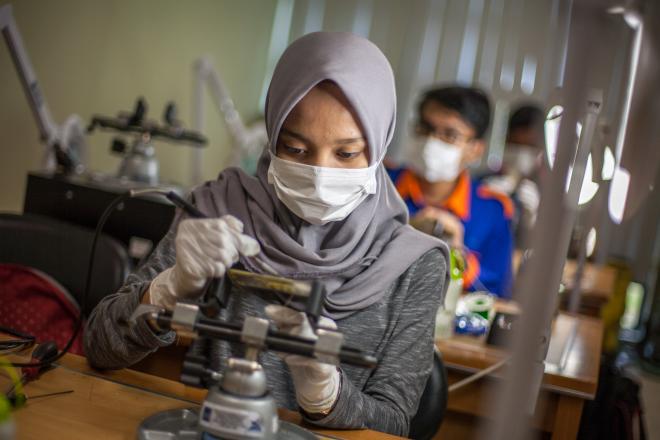
Young people in Asia and the Pacific will find it more difficult to find jobs this year as a result of the coronavirus disease (COVID-19) pandemic, according to a joint report by the International Labour Organization (ILO) and the Asian Development Bank (ADB).
The report, Tackling the COVID-19 Youth Employment Crisis in Asia and the Pacific, said in the immediate crisis, young people, aged 15 to 24, will be worse off than adults, 25 years old and above, in the job market and will suffer higher longer-term economic and social costs.
Close to 220 million young workers in the region are particularly vulnerable given their short tenure on the job, their employment in hard-hit sectors, and their tendency to accept informal jobs, said the report.
Because of the pandemic and government lockdowns, young people were laid off and saw their working hours reduced. Their education and training were also disrupted. They also had difficulties transitioning from school to work and moving between jobs.
“The crisis will affect young people differently depending on their situation in the labor market. The scale of the impact will depend on the length of the crisis, the choices of governments in the socioeconomic recovery, and the capacity of institutions to implement effective measures,” the report said.
Large-scale and targeted response needed
Governments in the region urgently need to adopt large-scale and targeted responses, focused on comprehensive labor market policies to address the youth employment crisis, the report said.
It recommended providing youth-targeted wage subsidies and public employment programs; expanding job information and employment services targeted to young jobseekers; supporting apprenticeship programs and focusing on demand-driven skills development; increasing funds for upskilling and reskilling, especially in growth sectors; investing in digital inclusion for equitable access to education, training and entrepreneurship; and supporting young entrepreneurs through access to capital combined with non-financial services.
Such policy measures are needed to minimize future “scarring”—lasting negative impact on productivity and wages—of the current generation of youth, the report said.
Hardest-hit sectors
The report said more than 100 million, or close to half of young workers in the region, are employed in wholesale and retail trade and repair, manufacturing, rental and business services, and accommodation and food services—the four sectors hit hardest by the crisis.
This is one of the reasons young people face greater labor market disruption and job loss than adults because of COVID-19.
The share of working youth in high-risk sectors was 47% in Southeast Asia and the Pacific, and 36% in South Asia.
Projected job losses
The report estimated that between 10 million and 15 million youth jobs (full-time equivalent) may be lost across 13 countries in the region in 2020 because of the crisis.
Youth job losses and unemployment rate, estimates, 2020
Among BIMP-EAGA countries, only Indonesia and the Philippines had available data cited in the report. Indonesia’s youth job losses are estimated at 1.26 million if the pandemic is contained in the short term, and 1.88 million if not under control by September. Under the same scenario, youth job losses in the Philippines may be between 687,000 and 1.02 million.
Youth unemployment rate in Indonesia in 2020 is projected at 22.7% under the short containment scenario and 25.5% under the long containment scenario. In 2019, the country’s youth unemployment rate was at 17.0%.
Youth unemployment rate in the Philippines, meanwhile, is projected at 15.1% to 19.5% in 2020, more than double the 6.8% posted in 2019.
Region’s future at stake
Without appropriate government response, the region risks derailing an inclusive recovery from COVID-19, the report warned.
“Prioritizing youth employment and maximizing youth productivity in the COVID-19 recovery process will improve Asia and the Pacific’s future prospects for inclusive and sustainable growth, demographic transition, and social stability,” the report said.
“When young people feel empowered to earn a living through fulfilling work, and their energy, creativity, and talents are nurtured, they can take up their roles as active, engaged citizens. This contributes to a positive cycle of economic growth, investment, and social justice.”
This article was first published by BIMP-EAGA on 3 September 2020.

